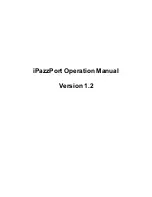
8
6.1 CANopen functions
The following CANopen functions are available
●
Node ID
– In the CAN network, each device has a node ID that is used to address the
device in the network and to define its priority�
●
EDS (Electronic Data Sheet)
– An EDS file describes the communication properties of a device on the CAN
network (baud rates, transmission types, I/O features, etc�)� It is provided by
the device manufacturer and is used in the configuration tool to configure a
node (like a driver in an operating system)�
●
PDO (Process Data Object)
– CANopen frame containing I/O data�
A distinction is made between
– Transmit-PDO (TPDO): data is provided by a node�
– Receive-PDO (RPDO): data is received by a node�
The transmission direction is always seen from the node's point of view�
●
SDO (Service Data Object)
– SDOs are used to read or write parameters while the application is running�
●
COB-ID (Communication Object Identifier)
– Each CANopen frame starts with a COB-ID working as the Identifier� During
the configuration stage, each node receives the COB-ID in accordance with
the Pre-Defined Connection Set, PDO + NodeID (Default: 18A and/or 28A)�
●
NMT (Network Management Transition)
– The NMT protocols are used to issue state machine change commands
(to start and stop the devices), detect remote device boot-ups and error
conditions�
6.1.1 Pre-operational
If the unit in is the pre-operational mode, the configuration can be changed� Only
SDOs can be used to read or write device-related data�
The unit is in the pre-operational mode
– when it is switched on�
– on receiving the Enter Pre-Operational NMT indication, if it was in
Operational Mode beforehand�
If configuration is complete, the device goes into one of the following states on
receiving the corresponding indication
– "Stopped" on receiving the "Stop Remote Node" NMT indication�









































